RATE, ACCURACY AND EFFICIENCY OF TEXT ENTRY AS A FUNCTION OF DIFFERENT COMPUTER ACCESS METHODS
BACKGROUND
Results |
|||
|---|---|---|---|
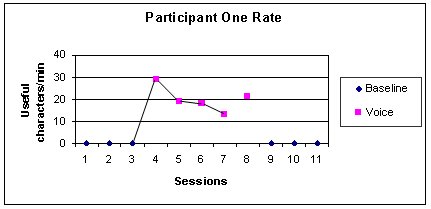 |
Qualitative methods of measurement of AAC performance have been and continue to be developed. Hill and Romich developed the Language Activity Monitor (LAM) to gather data on AAC system performance in the natural environment, to enhance clinical decision making and objective outcomes measurement [4]. Lesher and colleagues are developing universal data logging and analysis tools in augmentative communication as a means of complex analyses of user-machine interactions [5]. Saunders and Saunders developed an automated data system for the measurement of frequency and duration of switch use, thus, increasing the ability to make informed decisions about the effectiveness of switch use [6, 7]. No automated measures of text entry into a computer were found.
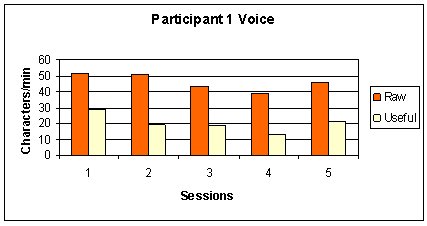 |
The purpose of this study was to determine whether a data-logging computer program can be used to measure the text entry rate, accuracy, and efficiency of individuals with moderate to severe motor impairments. This would allow the therapist and consumer to determine whether some alternative individualized computer access interventions are more efficient than the standard keyboard and mouse.
METHOD
A single subject, ABA design, was used with three participants having moderate to
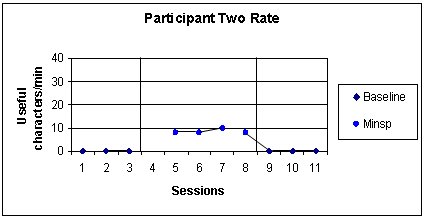 |
severe motor impairments. During the baseline phase, participants entered text with a standard keyboard and mouse. During the second phase, participants entered text using one of three computer access modifications: voice recognition software, Minspeak® rate enhancement via Liberator™ or Pathfinder™ communication aid, and the Headmaster™ pointing
RESULTS
Using the "text-timer" program, optimum text entry rates of three individuals with moderate to severe motor impairments were measured over time. Their useable
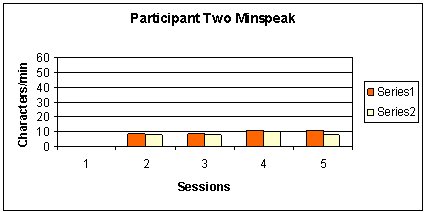 |
text entry words per minute rate ranged from a mean of 1.41 to 3.23 words per minute (wpm), accuracy ranged from 44% (voice recognition) to 88% (Minspeak®), and efficiency ranged from 1hit in: 1 useful character out to 1hit in: 3.07 useful characters out. See Figures 1-6 and Table 1.
DISCUSSION
Performance data, in addition to descriptive data, is necessary to document need and progress of therapeutic interventions (K. Hill,
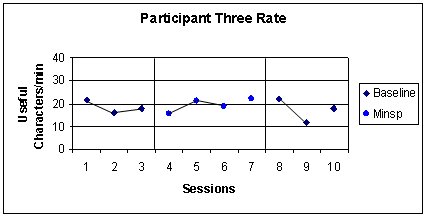 |
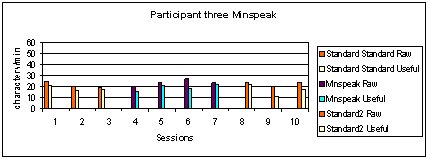 |
REFERENCES
- R. Sevcik and M. Romski, "AAC: more than three decades of growth and development," The ASHA Leader, vol. 5, 2000.
- J. Treviranus, "Mastering alternative computer access: the role of understanding, trust and automaticity," Assitive Technology, vol. 6, pp. 26-41, 1994.
- H. Koester and W. McMillan, "Software for assessing computer usage skills," presented at Technology for the New Millennium, Orlando, 2000.
- K. Hill and B. Romich, "AAC best practice using Language Activity Monitoring," presented at CSUN, Los Angeles, 2000.
- G. Lesher, B. Moulton, G. Rinkus, and D. Higginbotham, "A universal logging format for AAC," presented at CSUN, Los Angeles, 2000.
- K. Hill and B. Romich, "A rate index for augmentative and alternative communication," International Journal of Speech Technology, vol. 5, pp. 57-64, 2002.
- M. Saunders and R. Saunders, "Automated data collection of microswitch use with persons with severe multiple impairments," presented at CSUN, Los Angeles, 2002.
- R. Lucky, Silicon dreams, 1st ed. NY: St. Martin's Press, 1989.
